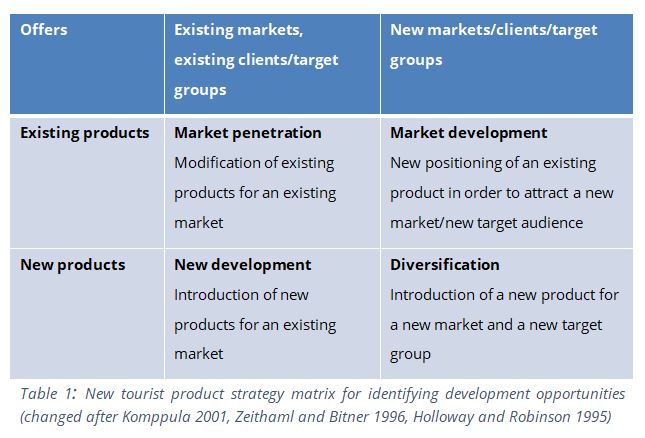INSiGHTS - New product development in tourism – linking health with environment
10-10-2017
One important goal of INSiGHTS is the development of new tourism products based on the natural and cultural heritage as well as supporting health and livelihood in the tourism destinations. In tourism planning product development belongs to the typical tasks. New trends increasingly focus on product development in nature, nature experience, health and well-being. The main reasons for this new emerging demand are changing working conditions, stress, an aging society and the feeling of many people that they are detached from nature and nature experience. Product development is an important issue of the transnational INSiGHTS walkshops.
Where do the ideas for new or adapted tourism products come from?
Research by Kotler et al. (1999) shows, that the development of new tourism products is mostly initiated by enterprises or the destinations themselves. Besides, newly introduced tourism products are often advances on and modification of existing products. They are “inspired” by competing destinations or entrepreneurs or the result of requests by clients or staff members. Sometimes, also research or consulting offices contribute to the overall improvement of local tourism products.
Strategies for developing new tourism products for a destination are identified in the tourism product development framework based on studies by Komppula (2001), Zeithaml and Bitner (1996) as well as Holloway and Robinson (1995).

What helps to find successful ideas?
Successful new products always support the unique selling proposition (USP) of the respective destination and enhance their profile. Therefore, a clear understanding of the joint visions in the destination and its overall strategy is needed. In this process it could be very helpful to include local stakeholders in the discussion and planning process. Based on the existing offers they can expand these and form new products or use the existing offer to develop supporting new offers. The involvement of local stakeholders can also be used to evaluate the ideas and to define priorities.
A second important approach is based on the analyses of the preferences and needs of the guests and people interested to visit the tourism destination. Here a visitor survey is an important instrument to achieve new solutions. A high potential in the development of new products is seen in the concept of Co-creation. It uses the customers and treats them as partners in the development of new tourism products.

Within INSiGHTS we will contribute to the strategic development of new products by analysing the respective regions and their visions. The self-assessment of the current situation of the eight project regions revealed that some destinations lack detailed information on several aspects important for tourism development. Gaining this information will be necessary to adapt and develop tourism products in the project regions. Learning by using ideas from competitors and other destinations is strengthened by the INSiGHTS project. Walkshops and study visits support the exchange of ideas and experiences.
written by Ulrike Pröbstl-Haider, Univ. Prof. Dr.
University of Natural Resources and Life Sciences Vienna,
Institute of Landscape Development, Recreation and Conservation Planning (ILEN)
Sources
- Holloway, J.C.; Robinson, C. (1995): Marketing for Tourism. 3rd Edition. Harlow: Longman.
- Komppula, R. (2001): New-product Development in Tourism Companies – Case Studies on Nature-based activity operators. Paper presented at the 10th Nordic Tourism Research Symposium. October 18-20 2001. Vasa: Finland.
- Kotler, P.; Wong, V.; Saunders, J.; Armstrong, G. (1999): Principles of Marketing. 8th Edition. New Jersey: Prentice Hall.
- Pröbstl-Haider, U.; Lampl, R. (2015): From Conflict to Co-creation: Ski-touring on groomed slopes in Austria. Paper presented at the 6th Advances in Tourism Marketing Conference. October 08-10 2015. Joensuu: Finland.
- Zeithaml, V.A.; Bitner, M.J. (1996): Service Marketing. Integrating Customer Focus across the Firm. 2nd Edition. USA: McCraw-Hill Higher Education.
